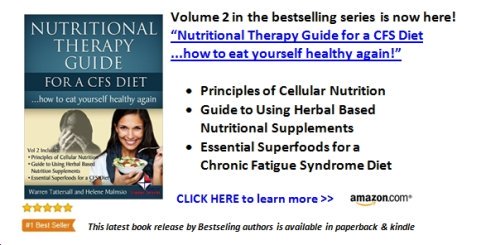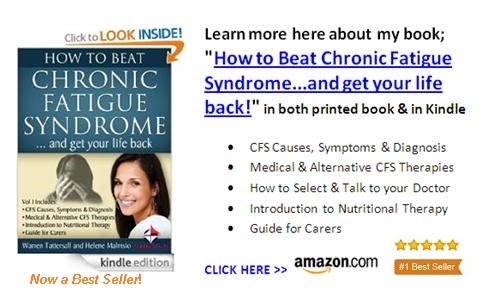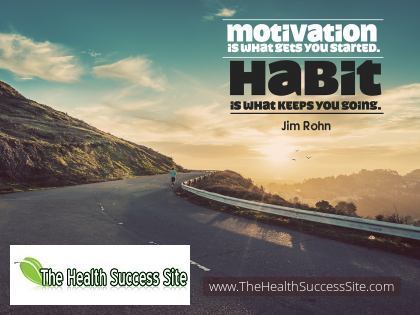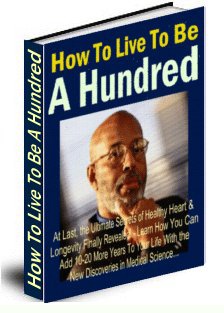| Back to Back Issues Page |
 |
|
Understanding PTSD" - Your Health Success ezine September 07, 2021 |
| Hi there
I hope you enjoy the e-zine as much as I do writing it. Index: Optimum Health Tip:One Minute Weight Loss GuideDevelop a meal schedule and stick to it. Try to have food at fixed times of the day. You can stretch these times by half an hour, but anything more is going to affect your eating pattern. Quit snacking between meals. The main problem with most snacks and junk food is, they are usually less filling and contain a lot of fat and calories. Go easy on tea and coffee. Tea and coffee are harmless by themselves, but when you add cream and sugar they become fattening. Having a cup of tea or coffee with cream and sugar is as bad as having a piece of chocolate cake. Do not skip meals. The worst thing you can do while watching your weight is skip a meal. It has just the opposite effect of what you want. You need to have at least three regular meals every day. Choose a variety of foods from all food groups every day. In addition to helping you lose weight, it also helps
your body fight deficiency diseases. Change the foods you eat each day so you do not get bored of your diet. Try and adopt a vegetarian style diet. A vegetarian diet is healthy, but research has shown it often is missing vital minerals that come from eating meat. If you try a vegetarian diet, allow yourself to eat meat on the weekends. Instead of frying food, try baking it. Baking is a healthier method of preparing food because it doesn't require excessive amounts of fat or oil. Drink plenty of water. Water is not just way to flush out toxins. If you have more water in your body you will generally feel healthier and more fit. It also helps you feel full, so you don't have the urge to eat so much. And water has no calories at all. Drink a glass of water before you eat each meal. Water takes up space in your stomach, so you feel fuller without eating as much. Eat fresh fruit instead of
drinking fruit juice. Juice is often sweetened with sugar, but fresh fruit has natural sugars. When you eat fruit, you are taking in a lot of fiber, which the body needs, and fruit is an excellent source of vitamins. Increase your fiber intake. Your body needs a lot of fiber, so try to include it in your diet. Eat as many fruits and vegetables as you can. Motivating Quotes:"Be always at war with your vices, at peace with your neighbors, and let each new year find you a better man." ~ Benjamin Franklin "Be who you are and say what you feel, because those who mind don't matter, and those who matter, don't mind." "Inside every older person is a younger person
-- wondering what the hell happened?" This is a Stressful time. How are you handling it?Lock-downs, travel restrictions, job insecurity, relationship pressures, illness, risk of illness, fear for families wellbeing, this is a stressful time.It is not just Covid, and dealing with the direct effects, it is all of the other things around it which creates quiet stress and causes damage that is often not acknowledged. We all should be aware how to deal with the aftereffects of the pandemic but for now it is time to review Post Traumatic Stress and Post Traumatic Stress Disorder so we understand them a little better and so we can think about how we, and our families, may be effected by them, given the current situation. This is a long report so you may not want to go through it all but if it strikes a chord with you then having all the information is important so this month is more in depth than most of our newsletters. I also strongly recommend that you look again at your nutrition and personal wellness.
Balanced nutrition and giving your body to tools to keep well and to handle stress can lessen the impact of all things we are dealing with currently. In addition to this PSTD report I strongly recommend that you go to our nutrition report: Nutrition for your Cells and review how that may assist you. REPORT: "Understanding PTSD"
The 1980s term PTSD was a major shift in the way that people began looking at the reaction to trauma. During World War I, many perceived soldiers with PTSD symptoms as being weak or feeble. It was thought that the things they were feeling were due to a poor constitution. The change during the 1980s put PTSD in an entirely new light. According to the U.S. Department of Veterans Affairs: From an historical perspective, the significant change ushered in by the PTSD concept was the stipulation that the etiological agent was outside the individual (i.e., a traumatic event) rather than an inherent individual weakness (i.e., a traumatic neurosis). The key to understanding the scientific basis and clinical expression of PTSD is the concept of "trauma." In other words, anyone can be susceptible to a physical and mental reaction to a highly traumatic life event. An outside factor like war or sexual abuse can have a serious effect
on a person. In 2013, the Diagnostic and Statistical Manual was updated. At this time, PTSD was changed from being categorized as an anxiety disorder to being classified as a “trauma or stressor-related disorder.” One of the reasons for this change is that PTSD is not only exhibited as anxiety. Psychiatrist Dr. Tracey Marks explains: What Causes PTSD? While PTSD is most often
associated with veterans, it is also common with: ● Accidents such as a car crash While other people may develop mental disorders from trauma in their life, PTSD is reserved for a distinct type of trauma. For example, people who are going through a difficult life experience such as sickness, divorce, or loss of a job may experience anxiety, depression, or other mental health issues. However, PTSD is defined for a certain group of people experiencing a specific set of symptoms. The type of trauma used to diagnose PTSD as defined by the DSM-5 is: A person exposed to: death, threatened death, actual or threatened serious injury, or actual or threatened sexual violence, as follows: ● Directly experiencing the traumatic event ● Witnessing a traumatic event in person ● Experiencing repeated or indirect exposure to aversive details of a traumatic event. This usually happens in the course of normal job duty, such as a police officer repeatedly working on child abuse cases, or first responders cleaning up the aftermath of a car crash. Note: This does not include non-professional exposure such as people watching the news or watching movies depicting traumatic events). Some people may feel invalidated when they do not receive a PTSD diagnosis, thinking that they’re being told that
their trauma isn’t serious enough to warrant the diagnosis. While these feelings are understandable, it doesn’t mean that they are not feeling or experiencing symptoms brought on by mental health issues or by trauma. People with anxiety often have heart palpitations and avoidance is a common symptom of depression. The difference between PTSD and other trauma-based or mental health diagnoses is not meant to downplay or delegitimize their experience, but rather to illuminate a specific mental health disorder with a very specific set of symptoms. Risk Factors for PTSD These risk factors include: ● History of anxiety or depression Symptoms of PTSD As mentioned, PTSD has a fairly clear set of symptoms that make it unique from other mental disorders. PTSD may not look the same in every person, and not all people will experience the same severity of symptoms. However, all people with PTSD will exhibit four main symptoms. The main symptoms are: ● Re-Experiencing, or Intrusion Most people will experience one or two of these symptoms as a result of a traumatic event, but people
with PTSD will suffer from all of them to some degree. Symptoms usually appear within 6 months of the trauma, though at times they might begin manifesting at a later time. According to the DSM-5, in order to be diagnosed with PTSD, symptoms must last longer than 1 month. Symptoms must be severe enough that they interfere with daily life, and they must not be related to other factors such as medication, substance abuse, or illness. Re-Experiencing, or Intrusion This intrusion of thought may manifest in a variety of ways including: ● Nightmares Re-experiencing can be triggered by anything that reminds someone of the event such as words, locations, objects, people, or similar situations. What are Flashbacks? Of the intrusion symptoms, flashbacks are often the most troubling. A person who has a flashback feels like they’re actually re-experiencing the traumatic event in real time. Dr. Matthew Tull, a professor of psychology writes: Avoidance A person who experiences a traumatic event may find themselves wanting to avoid things that remind them of the event. They may also become afraid of doing something or going somewhere similar to the original traumatic event. For instance, someone who has been in a serious car accident may want to avoid driving or may be afraid to drive in certain circumstances such as heavy traffic or snowy roads. Someone who has been sexually abused may want to avoid intimacy in the future. Other symptoms of avoidance include: ● Avoidance of talking about or having conversations that remind a person of the traumatic event ● Attempt to avoid close relationships with people that may lead to detachment or estrangement ● Lack of interest in social events or activities ● Self-medicating with drugs, alcohol, or risky
behavior Hyperarousal Hyperarousal is a symptom that makes someone with PTSD overreact to their outside stimulus. The body goes into high alert thinking about a traumatic event and may make the person feel like they are currently in danger. This feeling can result in a myriad of responses that are confusing to friends and loved ones. Because loved ones aren’t sharing the same feelings of danger, it can be scary or even frustrating to be with someone responding to unseen trauma. ● Trouble sleeping Negative
Alterations to Cognitions and Mood Another key symptom of PTSD is a negative outlook on self and the world around. These feelings are newly formed after the traumatic event and are not typical for the person experiencing PTSD. These negative feelings may appear like this: ● Intense feelings of guilt People suffering from PTSD may have feelings of worthlessness or may feel deep shame for things they have done or witnessed. These feelings may interfere with forming or maintaining relationships with friends and family. It could also diminish their ability to pursue gainful employment or advance their career. According to Dr. Matthew Tull: As a result, cognitive distortions can have a negative influence on our mood and eventually lead to unhealthy behaviors. The connection between thoughts and actions is part of the reason cognitive distortions are considered a central part of cognitive-behavioral therapy."
(continued below...) Recommendations & Sponsors:Our Sponsors and Affiliates are what keep this newsletter and our website self help books, articles and resources free to you, so we appreciate your support when purchasing from our sponsors.DO YOU HAVE CHRONIC FATIGUE? There is help and NEW HOPE for you! Our unique combination of natural ingredients is proven to help beat CFS Did you know that Chronic Fatigue Syndrome can be as disabling as Multiple Sclerosis, Lupus, Rheumatoid Arthritis, congestive Heart failure and similar chronic conditions? In 2012 I began co-writing a book about the CFS therapies that had worked for me and my clients. I'm proud to announce that the first book in our series became a Bestseller on Amazon, ranking #1 in the chronic fatigue syndrome category! Since then, I have published Volume 2 about our CFS Diet, to fully explain how your digestive system, using cellular nutrition and superfoods, along with herbal based nutrition, can help you to recover your energy and wellbeing too!  REPORT: "Understanding PTSD" continued:Different Types of PTSDAlthough major symptoms are similar across the board, there are different types of PTSD. Depending on what type of PTSD someone has, their symptoms may be more severe or long-lasting or they may require different types of therapeutic treatments. Complex PTSD PTSD may have become more familiar to the common person, but there is a lesser-known variation of PTSD called complex PTSD (c-PTSD). The traditional form of PTSD may emerge after a single traumatic event. An example may be a life-threatening car crash. A person who lived through a car crash may find themselves afraid of driving, may avoid getting in the car or driving in traffic, and may have other symptoms associated with PTSD. C-PTSD is more often associated with people who experience trauma in their childhood. It affects the way that a person develops, since they’re exposed to trauma during a highly developmental time in their life. This term is not in the DSM-5, but it is a term that mental health workers use to help describe the difference between someone who has experienced a single traumatic event, and one that has experienced chronic trauma, especially in childhood. Symptoms of c-PTSD are similar to PTSD, but they also include additional behavioral differences. Dr. Tracey Marks explains c-PTSD in this way: So unlike a person with PTSD
who may be checking locks, and having flashbacks, and refusing to drive or jumping every time I hear a loud noise, [those] with c-PTSD [have] more behavioral things like relationship difficulties, poor self-esteem, anger problems, [and] mood instability." She went on to say: Additional symptoms associated with c-PTSD are: ● Negative self-view. Those with c-PTSD may think very poorly of themselves or may carry ongoing feelings of guilt, shame, and helplessness. ● Trouble controlling or regulating emotions. They may have what’s considered an explosive temper, given easily to sadness, or even have feelings of depression or suicidal thoughts. ● Dissociative symptoms are disconnected thoughts, memories, actions, and identity. It’s a brain’s defense mechanism that tries to escape reality. Some people with dissociative disorders develop alternative identities, but they may also suffer from amnesia. People with dissociative symptoms may struggle with concentration or may disconnect from the world around them. Therapy can help people diagnosed with c-PTSD, but it’s usually a longer process and takes more effort from a therapist and patient to undo the damage done in childhood. PTS or Post Traumatic Stress is actually not a type of PTSD, but
it could be a precursor for it. When people experience a traumatic event, it’s normal to be affected by it. Those with PTS experience many of the same symptoms as PTSD such as avoidance or nightmares. The difference is that those who suffer from PTS experience those symptoms with less severity and for a shorter period of time. People with PTSD will continue showing those symptoms for longer periods of time and with greater intensity. According to Dr. James Bender of the Deployment Health Clinical Center: Dr. Bender went on to say that the symptoms from PTS will subside after a few days
and they won’t interfere with a person’s life in any meaningful way. The traumatic event may make them more careful in the future, but it won’t stop them from living their life normally. Those with comorbid PTSD are people who have both PTSD and another mental disorder. In this case, someone may have PTSD and depression, or PTSD and generalized anxiety disorder. Anxiety, depression, and substance abuse are the most common types of comorbidity with PTSD. It’s estimated that as much as 80% of people with PTSD have another co-occurring psychiatric disability. People with PTSD are more likely to engage in risky or destructive behavior. If PTSD is triggered by trauma, doing something that might lead to additional trauma is difficult to understand. It’s a common belief that people with PTSD turn to these behaviors as a way to escape the
symptoms of PTSD, especially intrusion. Those who use drugs or alcohol may be using them as a coping mechanism to help them avoid thinking about their original trauma. It may also be a way to assuage guilt or shame associated with the trauma. Types of risky behavior may include: ● Gambling This self-destructive behavior may diminish symptoms of PTSD momentarily, but ultimately the stress of these choices prolongs PTSD symptoms and make the disorder worse. Dr. Naomi Sadeh, an Assistant Professor the National Center Boston VA/Boston University, is quoted saying: For individuals with PTSD, exposure to new stressful events will often prolong their symptoms and can even make them worse. So these findings suggest that treatment providers should ask
trauma-exposed veterans about reckless behavior to make sure they are not engaging in harmful behaviors that could make their PTSD symptoms worse. When it comes to treating PTSD, a therapist will try to address any risky behaviors the patient may be engaging in to help reduce the risk of continued trauma. It’s no secret that PTSD can strain relationships, particularly with a spouse or partner. There have been many cases of strong marriages unable to withstand the effects of severe PTSD. Though both members may want to maintain the relationship, there are times when people are unable to resolve the inherent issues with PTSD. In 2019, Meagan Drillinger wrote a piece for Healthline called “6 Things I Learned From Dating Someone With PTSD.” In the article she explained, “For three years, I was in a relationship with a man who experienced PTSD
symptoms daily. My ex, D., was a decorated combat veteran who served in Afghanistan three times. The toll it took on his soul was heartbreaking.” She went on to say: You want to have all the answers, but you often have to come to grips with the reality that this is a condition that can’t be loved out of someone." In this section, we will look at some of the things you can do to support loved ones with PTSD. That being said, it’s extremely important to know that supporting someone with PTSD does not mean you’re responsible for making them better. If you have a relationship with someone who has PTSD, you can’t heal them with support. You can make their road easier, but your loved one should
seek professional help to give them the tools needed to help with their disorder. With that said, there are some things that you can do that might help ease their burden and lessen the strain in your relationship: 1. Understand that PTSD is real. 2. Give them room not to talk. Their resistance to talking about the traumatic event is not a sign of being unloving or untrusting, it’s more likely because they want to avoid
thinking about the event. Bringing it up often is more likely to cause them to pull away and become uncommunicative. Gently encourage them to talk about it when it seems appropriate but allow them to be the one to discuss it when they’re ready. 3. Work with a routine. The schedule you use will be different than someone else’s, but it may include exercise, meditation or prayer, planned mealtimes, and daily chores. 4. Learn more about PTSD. 5. Understand that caregiver burden is real.
People taking care of someone struggling mentally or physically can be extremely stressful and draining. Unlike professional caregivers such as physicians and nurses, informal caregivers, typically family members or friends, provide care to individuals with a variety of conditions including advanced age, dementia, and cancer. This experience is commonly perceived as a chronic stressor, and caregivers often experience negative psychological, behavioral, and physiological effects on their daily lives and health. Though the study was specifically talking about people taking care of loved ones with cancer or advanced age, the sentiment is the same for general, non-professional caregivers. Long-term care of a person can lead to secondary issues and can be a burden for them as well. To help lighten this load,
if you’re a caregiver, it’s a good idea to take time for yourself. Every moment of every day can’t be consumed with PTSD. Take time to do things that you love and enjoy. Another good solution is to find a support group for those who are also caring for loved ones with PTSD. Finding a community of people dealing with the same thing can help you manage your own feelings and concern. In addition, seek loved ones in your life and allow them to be part of your greater support network. Seek Professional Treatment Seeking outside help is essential for helping you and your loved one cope with PTSD. Although some may feel there’s a stigma with working with professional help, this viewpoint is becoming less common as people open up about mental health issues across the board. There is no shame in seeking professional help. If you’re living with or helping care for someone
with PTSD, it is often beneficial to seek therapy as well. Treatment for PTSD There isn’t a one-size-fits-all solution to PTSD, and it isn’t something that will be resolved in a short amount of time. Not only that, but if there are comorbidities involved, it will take longer for the therapist to determine what diagnosis and treatment are appropriate. Note: If substance abuse is present, look for a therapist trained to help with both PTSD and substance abuse. What type of treatment you or your loved one will get is up to your therapist, but below are some common forms of treatment for people with PTSD. Cognitive Processing Therapy (CPT) is a specific type of therapy used to help people change the way they view trauma. It has been effective in helping reduce symptoms of PTSD, and many mental health specialists
recommend this course of action for people diagnosed with the disorder. It’s thought to be one of the most effective treatments available. CPT is usually performed over 12 sessions (often 12 weeks) in 60-90-minute sessions. Sessions can be either individual or in a group setting. Trauma changes the way a person feels about themselves and the world, often causing them to develop an overly negative and hopeless view of things. This type of therapy can help them begin to reprocess the way they think about things. Prolonged Exposure Therapy Since avoidance is a symptom of PTSD, therapists will sometimes use a treatment called Prolonged Exposure therapy (PE). This treatment helps people confront the things they’re avoiding in increments. PE is usually broken down into 15 individual sessions lasting around 60-120 minutes. Sessions usually begin with the therapist asking
questions about the original trauma to help develop an understanding of the issue. This type of therapy will induce more anxiety and stress than CPT typically does, so therapists will try to equip their patients with anxiety-reducing coping skills. For example, a patient might be taught breathing exercises to help manage the stress. There are several ways that therapists expose a patient with the thing they’re avoiding. These techniques are: Imaginal exposure. In this type of exposure, the patient describes the traumatic event in present tense. In vivo exposure. This type of exposure is performed outside of the therapy session. The therapist and patient work together to come up with a list of things the patient has been avoiding. Then they agree on which ones to confront between therapy sessions in a gradual fashion. Eye Movement Desensitization and
Reprocessing EDMR is a different kind of treatment than talking through traumatic events. Instead, the patient is asked to think about the traumatic event while the therapist directs their eye movement. It’s thought that the eye movement while remembering a traumatic event can help drain the emotion and negative feelings attached to it. This type of therapy is still relatively new and is considered a non-traditional form of therapy. Though non-traditional, It is still considered to be an effective form of therapy. Medication For PTSD For some, medication may be helpful in addition to therapy. According to the National Center for PTSD, antidepressants are sometimes effective for treating symptoms of PTSD. These types of medications include SSRIs (selective serotonin reuptake inhibitors) and SNRIs (serotonin-norepinephrine reuptake inhibitors). Your doctor or therapist can help you determine if medication might be right for you. PTSD and the Road to Healing Treatment for PTSD may not be a cure, as with most mental health disorders total recovery can be difficult or unobtainable. However, many people who receive therapy see a significant and life changing improvement of symptoms. For some, therapy may even lead to a near absolution of symptoms. If you’re suffering from PTSD or you know someone who is, know that there are people who can help: ● The Substance Abuse and Mental Health Services Administration is available 24/7 by calling 1-800-662-HELP (4357). ● For veterans, the National Center for PTSD is also available by calling 1-800-273-8255 or you can reach online here: https://www.veteranscrisisline.net Hotlines are a good short-term solution that should be followed up with
therapy work from a trained professional. Build up a support network of people ready and willing to help when symptoms of PTSD become overwhelming. Be patient with yourself (or your loved one) because PTSD is a real disorder that requires time and care to improve. Remember that setbacks don’t erase all progress. For best results, learn all you can about PTSD, seek professional help, and keep your focus on healing. You can learn more here about Post Traumatic Stress Disorder and healthy self care strategies for your wellbeing.
Just enter WT (in capitals)to open the page.

News!
For all the subscribers that don't want to talk to anyone, just want to buy their products direct, I'm creating these websites that process orders for you once you register with them. |
| Back to Back Issues Page |





 Hi,
Hi,

